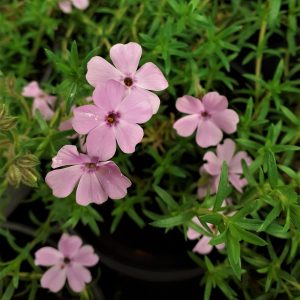Phlox, with its vibrant clusters of flowers, is a beautiful addition to any garden. Follow these planting guidelines to ensure the successful establishment and growth of your Phlox plants.
Site Selection
Sun Exposure: Choose a planting site that receives at least 6 hours of sunlight per day. Phlox generally thrives in full sun to partial shade.
Well-Draining Soil: Phlox prefers well-draining soil with a slightly acidic to neutral pH. Amending heavy clay soils with organic matter improves drainage.
Planting Time
Spring or Autumn: Plant Phlox in the early spring or autumn. Cooler temperatures reduce stress on the plants during establishment.
Planting Depth and Spacing
Depth: Dig a hole that is as deep as the root ball and twice as wide. Place the plant in the hole at the same level it was in the nursery container.
Spacing: Space Phlox plants according to the specific variety, usually around 18 to 24 inches apart, to allow for air circulation.
Watering
Initial Watering: Water thoroughly after planting to settle the soil and eliminate air pockets around the roots.
Regular Watering: Phlox prefers consistent moisture. Water when the soil feels dry to the touch, providing about 1 inch of water per week, especially during dry spells.
Mulching
Organic Mulch: Apply a layer of organic mulch around the base of the plants to retain soil moisture, suppress weeds, and regulate soil temperature.
Fertilisation
Balanced Fertiliser: In early spring, apply a balanced, slow-release fertiliser to provide essential nutrients for healthy growth. Follow the manufacturer’s recommendations for application rates.
Support (if needed):
Staking Taller Varieties: Some tall Phlox varieties may benefit from staking or support cages to prevent flopping. Install stakes early in the growing season to avoid damaging roots.
Deadheading
Regular Deadheading: Remove spent flowers to encourage continuous blooming and maintain a tidy appearance. This can also prevent self-seeding in the garden.
Disease Prevention
Adequate Air Circulation: Plant Phlox with enough spacing to promote good air circulation, reducing the risk of powdery mildew and other fungal diseases.
Division (Every Few Years):
Renewal: Every few years, consider dividing and replanting Phlox to rejuvenate the plant and prevent the centre from becoming woody.
Winter Care
Mulching in Autumn: Apply a layer of mulch around the base of Phlox in the autumn to insulate the soil and protect the plant’s roots during winter.
By following these planting guidelines, you can enjoy healthy, vibrant Phlox plants that will add colour and beauty to your garden. Adjust care practices based on your local climate and specific Phlox variety.

















































